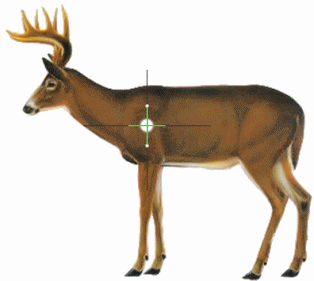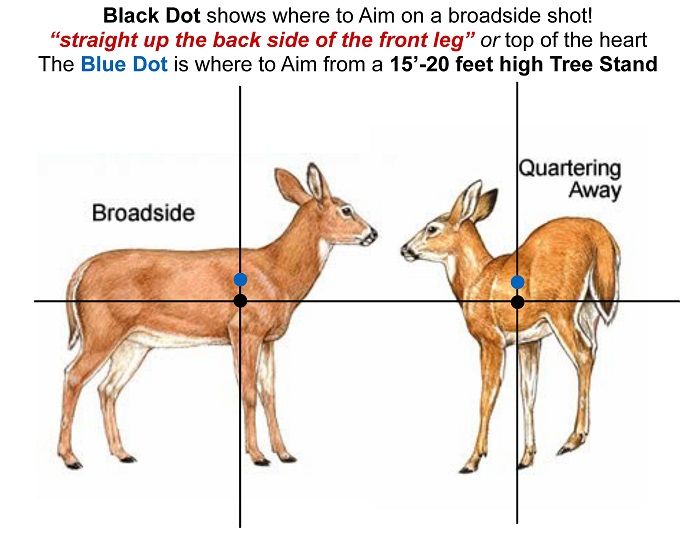
Don’t Aim for a Deer’s Head
In the National Deer Association’s collection of odd deer artifacts is a deer jawbone. It is bent, misshaped, and missing teeth on the left side. In a strange bulge of bone on the right side, there is a gray object – the bullet that damaged the deer’s jaw.
Joe Hamilton, a wildlife biologist from South Carolina and an NDA Board member, collected this jawbone from a hunter-harvested deer during his years of professional herd management. The deer didn’t die from the bullet in its jaw. It survived long enough for the bone to heal around the lodged bullet and the craters left by the shot-away teeth. It even survived long enough for its chewing patterns to grind an irregular slant on the remaining molars. Eventually, the deer was ethically killed by a hunter.
There’s No Margin for Error
I always remember this jawbone when advising people not to aim at a deer’s head. There is no margin for error around a deer’s relatively small brain (about 3 inches on average, up to 4 inches on a large buck). Don’t forget this: No margin for error.
In fact, a deer’s brain is an easily misjudged target. While a big whitetail may appear to have a large head, a skull mount reveals that the cranial cavity only makes up a small part of the skull. Misjudging the location of the brain within the skull on a live, moving deer is not uncommon.
Set aside marksmanship for a moment. I’m not criticizing your shooting skills, so don’t take it personally. Even a slight movement of the deer’s head when you take an otherwise precise shot can turn a lethal hit into a horrific wound. This can cause death after prolonged and brutal suffering, or leave the deer permanently scarred and disabled. Consider the areas that can be hit by a slightly off shot: eyes, tongue, throat, jaw, teeth, nose, and sinuses.
Deer move, and their heads (and tails) move the most often. They may pause and suddenly move again as you pull the trigger. No matter how great your shot is, we all need extra margin for error to ensure a quick and ethical death and a humane recovery. A deer’s brain gives you no margin for error.

Aim for the Heart and Lungs
The most lethal aimpoint that allows for considerable error is the large vital area in the chest where the heart and lungs are located. This shot should be taken from a broadside angle. The heart is only slightly larger than the brain, at about 5 to 6 inches on average, but it is surrounded almost entirely by an even bigger target – the lungs. Hitting both lungs while missing the heart still results in a dead deer that is easy to recover. Major arteries throughout the chest cavity can also be hit, causing a rapid drop in blood pressure and volume, leading to quick death even if the heart is missed.
Further out, there are other parts of the anatomy that are not ideal as primary aimpoints but can still cause a fatal hit. The shoulder bone and blade can be broken if the shot is too far forward, and hitting too high can result in hitting the spine. If the shot is far back enough to miss the lungs, the liver is usually a fatal hit, and the deer can be recovered with a little extra time. While it is important to practice and achieve proficiency in hitting the core of the vital area, it’s good to know that these surrounding areas can still result in an ethical kill when things don’t go as planned.
Avoiding meat damage is not a valid reason to take head shots on deer. Potentially causing serious injury to a deer that cannot be recovered is not worth any amount of saved meat. A heart/lung shot that puts the deer down close by might damage one or both front quarters if it’s slightly forward, but you will still recover most of the meat and provide a quick and humane death.
The fact that head shots may be used by some wildlife damage professionals, who control deer in sensitive urban settings where hunters cannot go, is not a valid justification either. These professionals operate in areas where deer are usually acclimated to people, and they often work at night, from vehicles, with spotlights and suppressors. They can also get very close to their targets. Their work is completely different from hunting wild deer in a natural environment.
In the wild, there is simply no good reason not to wait for a clear shot at the vitals, with a much higher likelihood of a humane harvest. If all you have is a head shot and you decline it, and the deer does not present a different angle, then let it go and be proud that you did the right thing. You might just see the deer again on your next sit.
So, show deer respect as America’s most important and valuable wildlife species, which we greatly admire. Wait for the deer to be still in a broadside position, bring your sights up the rear edge of the deer’s front leg, and stop about halfway up the body. This puts your sights right at the top of the heart. Relax, pull the trigger, make a clean, ethical harvest, and go get your venison.
So, show deer respect as America’s most important and valuable wildlife species, which we greatly admire. Wait for the deer to be still in a broadside position, bring your sights up the rear edge of the deer’s front leg, and stop about halfway up the body. This puts your sights right at the top of the heart. Relax, pull the trigger, make a clean, ethical harvest, and go get your venison.

A skilled hunter, dedicated conservationist, and advocate for ethical practices. Respected in the hunting community, he balances human activity with environmental preservation.
